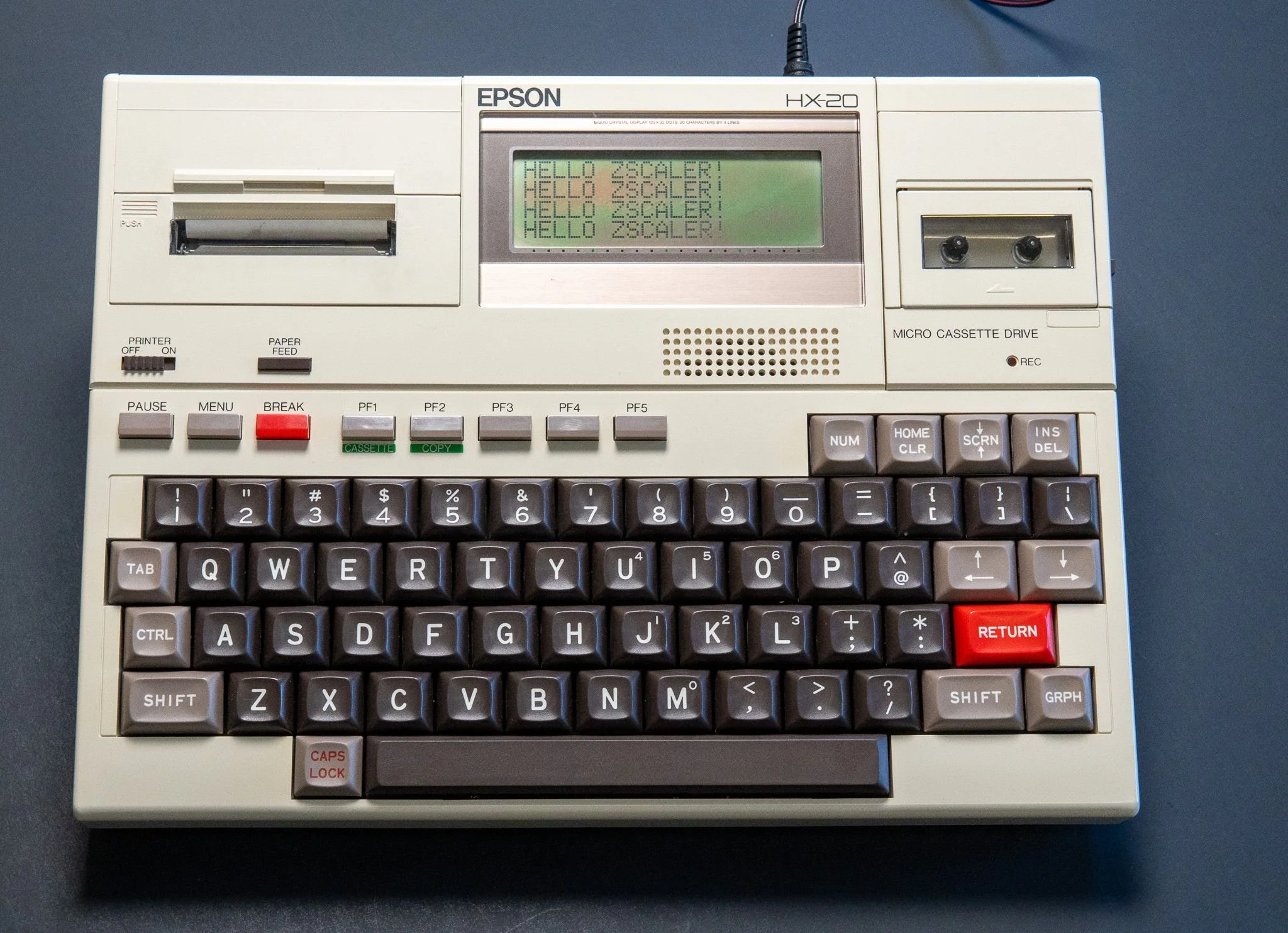Epson HX-20
Today’s entry in my ongoing “Zscaler Logo on a Weird, Old, or Obsolete Device” series is a monumental one: the Epson HX-20, the world’s first true “notebook” computer!
Designed by engineer Yukio Yokozawa in 1980-1981 and finally released in July 1982, the HX-20 was a marvel of miniaturized engineering. In the era when “portable” computers were 35llbs (~16kg) “luggable” suitcases, the HX-20 squeezed an entire workstation into a 3.5lbs (1.1kg) slab with the dimensions of an A4 sheet of paper. Including a motherboard with dual Hitachi CPU’s, a full-size mechanical keyboard and an LCD screen into such a small device would have been an insane accomplishment, but Yokozawa didn’t stop there - he also integrated a tiny receipt-style printer and a micro cassette tape drive for data storage.
Of course, like many “firsts,” the Epson HX-20 suffered from numerous limitations. The twin Hitachi processors were painfully slow, running at a mere 614KHz (or ~0.6 megahertz, to use the more familiar speed metric). The low speed of its CPU’s was a deliberate choice by Yokozawa, because “under-clocking” the processors allowed the HX-20 to operate for up to 50 hours on its internal rechargeable battery. Of course, using the built-in printer or tape drive would drain the battery much faster… creating some significant challenges for the user.
Unfortunately, there was no indication of how much charge was left in the HX-20’s battery, and there was no power management circuitry inside. Instead, the user had to manually estimate how much charge remained based on their recent usage, without forgetting to plug the system into its charger to prevent data loss. Even worse, the user also had to manually track recharge cycles, unplugging the machine from its charger at the appropriate time lest the batteries become overcharged - a potentially dangerous situation. Of course the original internal batteries died decades ago, creating a new problem: old batteries have a bad habit of breaking down and leaking corrosive acid into the machine.
I’ve owned a pair of these machines for a few years, but they were in rough shape and neither of them were functional. My most recent article for Pixel Addict Magazine focused on this style of “slabtop” computer, so I felt some real urgency to get at least one of these things running again so I could photograph it for the magazine. I ordered some modern replacement batteries and undertook a lengthy, delicate restoration process. There’s still more work to be done (their displays are very faint due to some failed capacitors I’ll need to replace), but I’m happy to report that both HX-20’s are now functional and ready for another 40+ years of life!
That’s it for today - happy Friday to you all!
